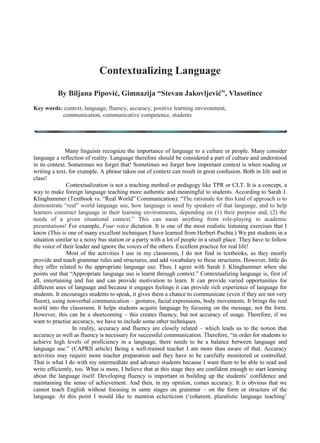The document discusses the significance of contextualizing language in foreign language education and emphasizes the necessity of balancing fluency and accuracy for effective communication. It argues that meaningful content, a positive learning environment, and varied teaching methods are crucial for engaging students and enhancing their communicative competence. The author, Biljana Pipović, draws on her teaching experience to advocate for an eclectic approach that caters to the unique needs of each student while making language learning enjoyable and relevant.




